Yellowfoot chanterelles are another great, easy to identify mushroom to add to your basket.
Like their cousins, the golden chanterelles, yellowfeet, also known as winter chanterelles or chanterelle en tube in France, have a pleasant and slightly fruity smell. But, like hedgehogs, these have a stronger mushroom flavor. They were formerly known as Cantharellus tubaeformis and are now known as Craterellus tubaeformis and other close relatives)
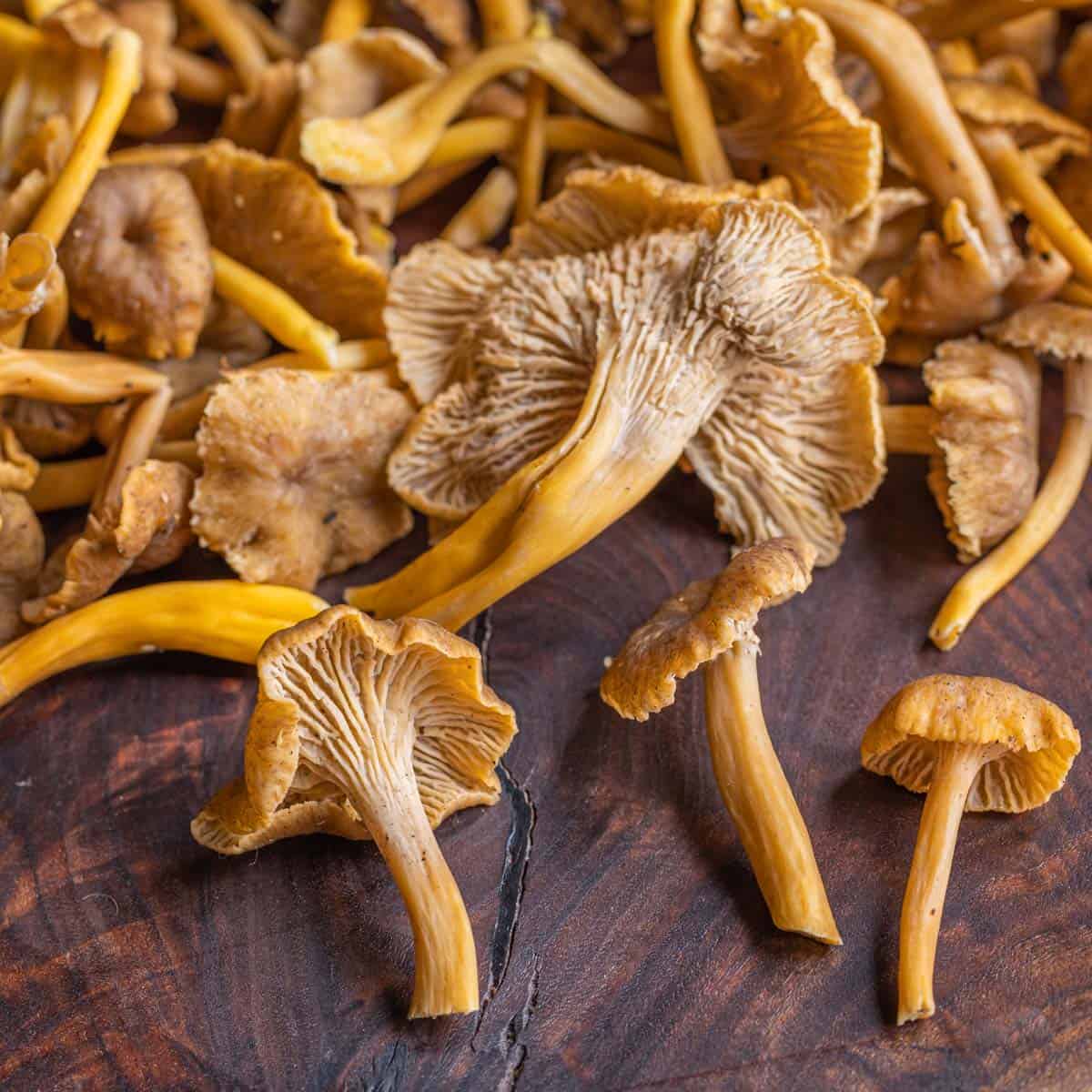
They're very delicate, and they will get crushed in a mushroom basket if you're not careful. They have a hollow stem and are quite small, sometimes no bigger than a stick of Chapstick, or smaller, as you can see in the picture above.

There's a number of different species of these, and so far I've only worked with two: Craterellus tubaeformis, and what I suspect to be Craterellus ignicolor, which I harvest in Minnesota. I'll let you guess which one I prefer. 🙂
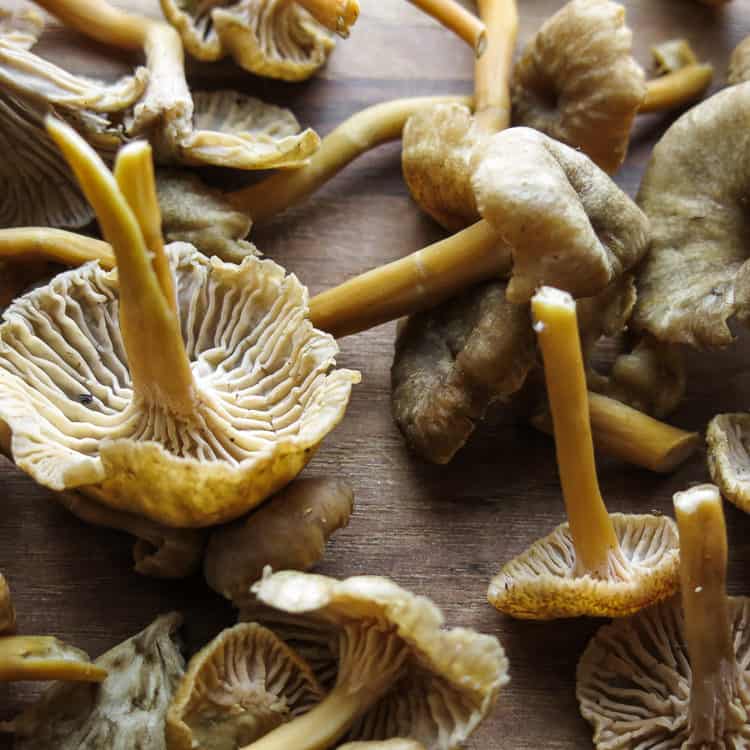
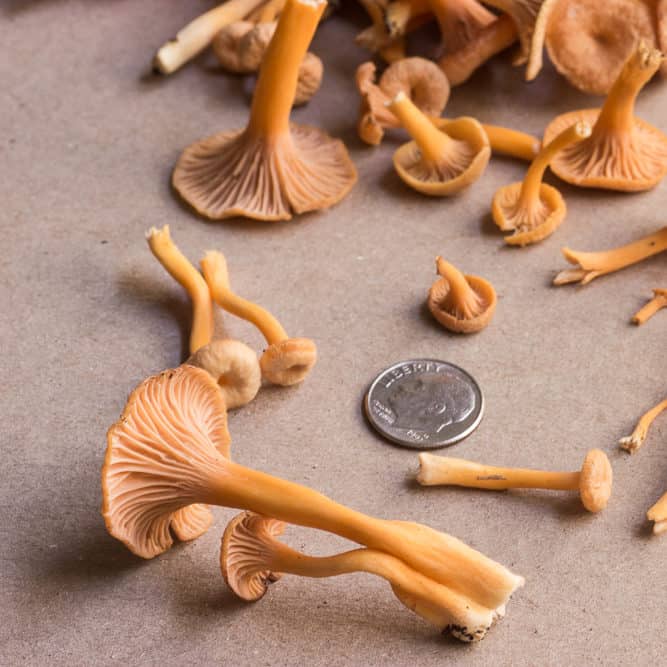
Habitat
Look in the late summer near decaying and putrid hardwood, and in swampy forested areas. I bring a small hard sided plastic container with holes punched in it for air flow to put them in so they don't get squished by other mushrooms if I'm going to an area and expect to see them. Just like black trumpet mushrooms, these have a saprotrophic tendency, meaning that they help compose dead matter.
I see them every year in the same place as I would chanterelles, but these really like wet, swampy areas near moisture and decaying wood, moss, etc.
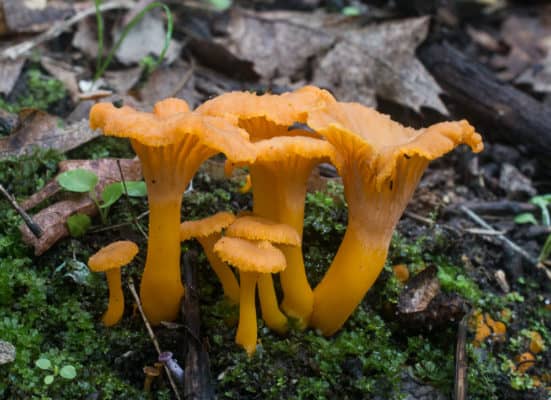
Use containers to separate delicate mushrooms in the field
You have to be resolved to pick yellowfeet, and you need to know how to treat them. I usually have some sort of container along with hard plastic sides, which could be a tupperware, or small restaurant deli containers (my preference) along with my mushroom gear in the car, specifically for delicate things like flowers, or mushrooms I want to keep separate from others as they stain/bruise, or will stain or bruise others like black trumpets and various boletes.
Tossed in a basket, with other, more chunky mushrooms like chanterelles or lobsters that fruit at the same time, or worse, a backpack, all you'll end up with are crumbles of what used to be mushrooms when you finally get home, reinforcing how useless it is to pick such small mushrooms.
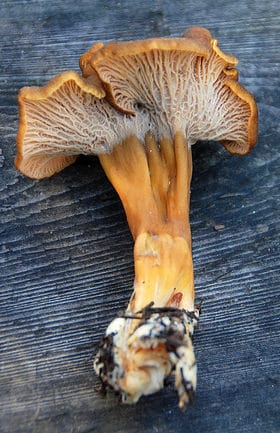
Cleaning
Just like black trumpets, these can be a bit of a pain as the orifice on the top of the cap can pick up all sorts of things, the most common being pine needles, which are the perfect size to slide right into the cap. If I get these from the Pacific Northwest, I rarely have to wash them, but I do check them over well for needles.

Yellowfeet I pick from the Midwest are generally pretty clean, unless there's been a rainstorm recently. I wash these with a quick swish in water only as a last resort, and then allow them to dry between a layer or two of paper towels.
Preservation
Since their hollow, these are an easy mushroom to dry, just use a low heat dehydrator setting or place them on a wire cookie rack in an airy place until they are cracker dry. If it was dry when you were picking, if you leave them on the counter, just like black trumpets, they'll probably dehydrate naturally.
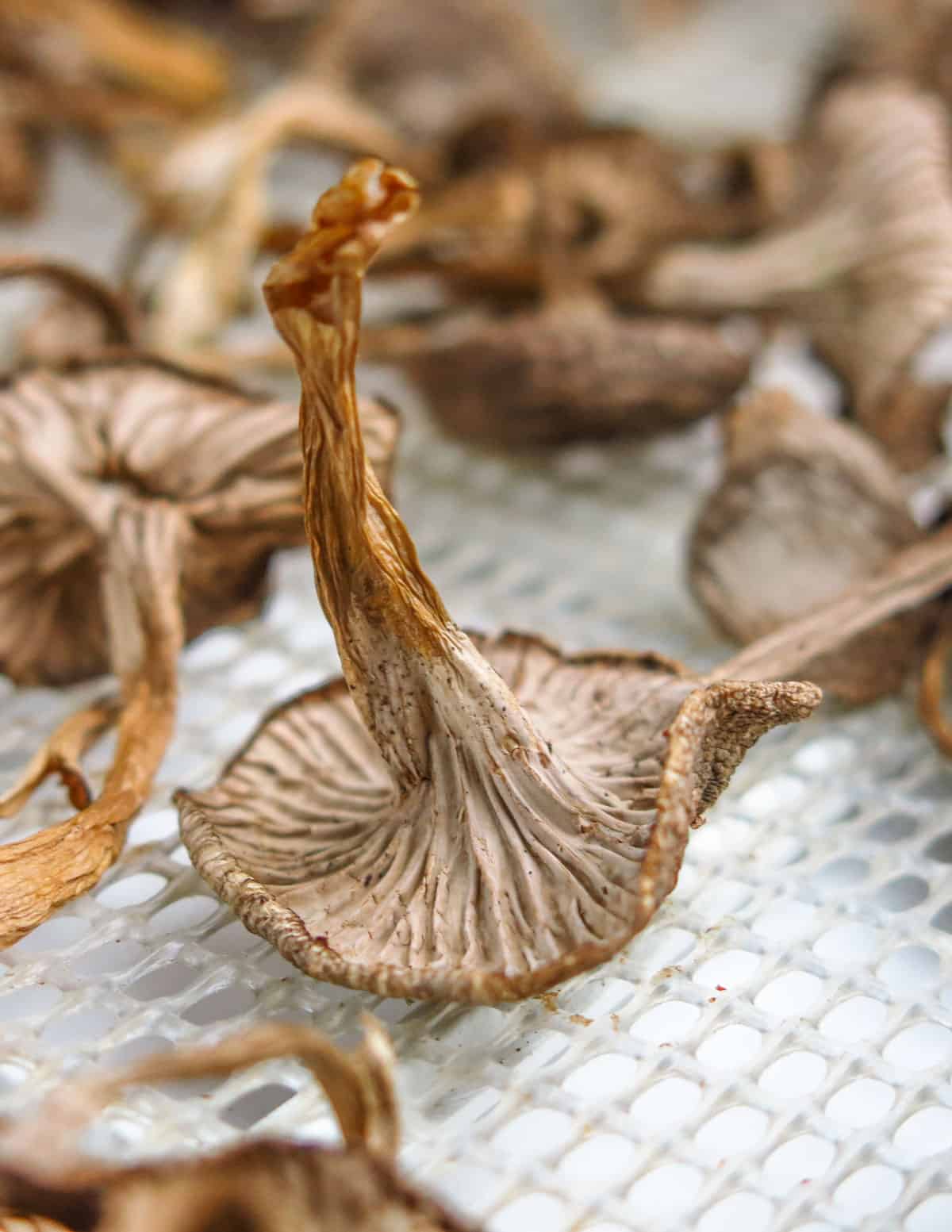
Since they're hollow, just like black trumpets, these are among some of the best mushrooms for rehydrating and keeping in larger pieces, although the stems can get a bit long sometimes.
Cooking
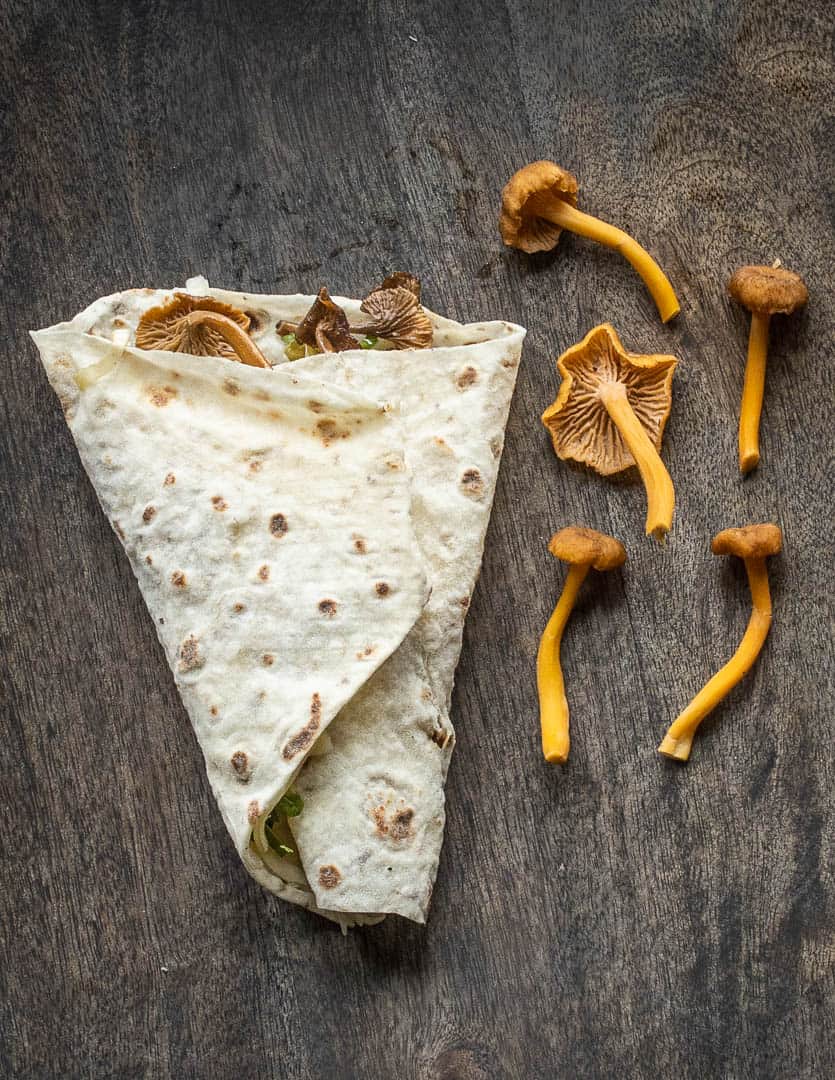
Culinary wise, these little guys pack a great mushroom flavor, and a delicate texture. The first time you try some, you might try just having them plain to have them by themselves.
Heat a pan with some butter or oil, when it starts to sizzle, add the yellowfoot chanterelles and then turn off the heat until they're heated through and wilted.
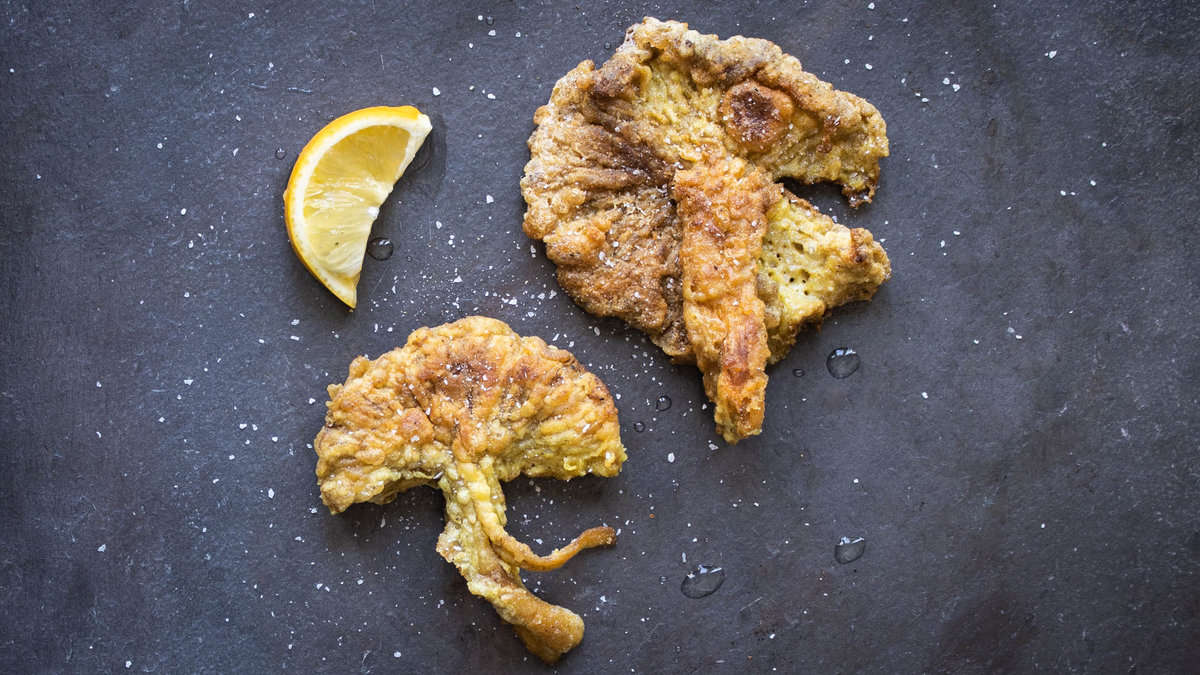
The first time you enjoy them, I would suggest only eating them with salt, to gauge their flavor for yourself. They would also make a wonderful sauce simply cooked in cream, as do most mushrooms.
With their long stems, especially with the larger species I see from the Pacific Northwest, they make a great pairing for noodles, especially homemade ones.
Recipes
Here's some recipes where I'd use these, or that I've made specifically using them.
Sole With Yellowfoot Chanterelles
Dried Yellowfoot Broth With Dumplings

Grace Parisi
Unsuccessful hunt for black trumpets today, but I was so excited to come across a big patch of yellow foot chanterelles. It's my first time foraging them in coastal Maine, though I have seen them and wasn't sure enough to pick them in the past. So happy that I know how to identify them now! I'd have liked to find black trumpets (my favorites) but these will do nicely!
Alan Bergo
They're a good little mushroom.
Debbie Shell
Hello!
Love your website and recipes! Getting ready to make the cauliflower gratin but I harvested the most enormous sparassis I have ever encountered. It must be about 2 feet around and weigh well over 5 or 6 pounds. Very nice and fresh. Could you please recommend the best way to preserve that is not a pickle.
thanks!
Debbie
Alan Bergo
Hi Debbie, you can take a look at my post on Cauliflower Mushrooms. The best way to preserve them without pickling is to cook them in butter or oil with salt, put into zip loc bags and freeze. I like to put them in vacuum bags, freeze, and then seal for the longest shelf life.
Randy Boyle
You mentioned $10-15 a lb for the western counterpart. Here in the UP of Michigan these smaller yellow foot are worth more. Been getting $25 and the chefs seem happy with it. Lots in a pound of these eastern varieties. Cross veination being the tell on the tubaeformis.
Alan Bergo
The smaller ones are definitely worth more .
Dia
Hi, I need some help. I tried drying mine but they turned soggy and black. I had washed them the night before and left them out to dry on a paper towel. They were in the fridge for two days before I washed them. What am I doing wrong?
Appreciate the help! Thanks
Alan Bergo
Hi Dia. The most important part of your question for me is the washing and drying, did you leave them out overnight, unrefrigerated? If so that's your problem. Mushrooms are more closely related to meat than plants, and they must always be refrigerated.
Carissa
Hi there! Long time mushroom lover out here in the PNW and huge foraging enthusiast. I remember a man and woman couple telling me at a mushroom festival to never wash mushrooms unless you were going to immediately cook them. I bring a brush with me and clean them as I pick. With yellowfoots, I do not wash and air dry on racks on my counter, I do also dehydrate when I want them done faster and don't want the clutter in my kitchen 😝. As long as the dried mushrooms are cooked you don't have to worry about washing them in water. The heat will kill the icks.
Silas
Finding huge flushes of them in Vermont this year. It's been an odd summer... with nuclear heat through June and early July, then ceaseless rain since then. Finding more black trumpets and winter chanterelles than the last five years combined.
Alan Bergo
Agreed it's been a great year for them.
Shinobu
Just found a field of these beauties in our recently acquired VT property. Black trumpets are also abundant.
Tony
Late September last year I found a whole mess of these in a bog in Cook county, MN. They're hollow with a light cap and yellow stem. Some were small like you say, but some were easily two inches across. I'm sure they're yellowfoots, but that's one I've never picked/eaten before. Is there anything I can mistake for these? Thanks!
Alan Bergo
Yes, IMO the most likely is Hygrocybe, but they don't have veins. Make sure to know your orange-red waxy caps in our area.
Tony
Hygrocybe have real gills, so I'm not too worried about mistaking those. I went out and picked a pile of yellowfoots last weekend, despite the bog being abnormally dry. I have to say, they're beautiful, dainty little things. And tasty too. We just got an inch of rain on Friday, so I'll go back later this week to hopefully pick more, and maybe some cranberries while I'm there. Thanks!
Tony
I should mention that the ones that grow in northern MN bogs are C. tubaeformis, a bit larger with brown caps.
Seth h
pretty sure these gave me the shits today. I probably ate 25 larger ones from the seattle area.
Alan Bergo
Seth, thanks for sharing. It is pretty common for people to have sensitivities to individual mushrooms. I've only heard of that sort of problem with Ramaria though, so this is a first.
Dan
Today I went on a hike in the forest of Fontainebleau, a place not too far from Paris, France. Since I came across some of these magnificent little guys, and since I was with an American friend who doesn't have a clue when it comes to fungi, I looked up their name in English on the Internet. This is the page that came up, and I must say, it's a great website! I'm Italian and we typically use these mushrooms in a risotto, but now I feel inspired to try new recipes. Thank you!
Katherine Hasselman
I found some I think. Same descriptions but mine have no gills. Smell fruity and very delicate and small, fine. I can’t seem to find info on these.
Tisch mills Wisconsin
Alan Bergo
They are widespread in WI
Craig Stewart
Also from SW BC. I usually find yelloww foot in late November thru December. In the same habitat, I find Chanterelles, The Chanterelles finish in October with stragglers still around in nov.
stef
Thanks cor that info. I foraged some today. First time I harvest wild mushrooms other then shaggy mains many years ago. I am in coastal SW BC. Came across thousands of these mushrooms while walking off track. They will be going in the pan tonight.
Alan Bergo
Congratulations. This is a mushroom that will serve you well. I'm jealous here, it's -8 F in St. Paul.